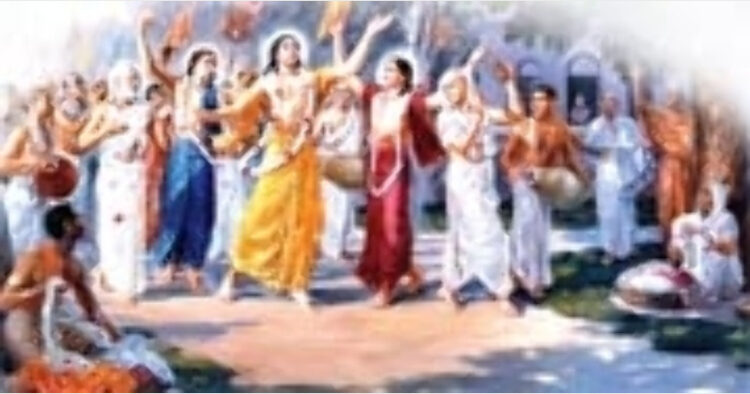 Bhakti Movement across the entire Bharat emerged as a national power and enlightened the entire nation towards a cultural awakening.
Bhakti Movement across the entire Bharat emerged as a national power and enlightened the entire nation towards a cultural awakening.
Alongside there was the Bhakti Movement across the entire nation which emerged as a national power and enlightened the entire nation towards a cultural awakening.
This awakening was based on Bharat’s ancient view of spiritualism , culture , values and was a nationwide movement. Scholars like Guru Shankaracharya (509 BC – 477 BC), Ramanujacharya, Nimbakacharya, Madhavacharya, Vallabhacharya spread the preachings across various regions in Bharat. Swami Ramanand gave devotion a completely new direction, Sant Kabirdas (1398 – 1518), Sant Ravidas (1376-1527) and their several disciples spread the message of the Bhakti Movement. Goswami Tulsidas preached about Bharateeya culture and ethos through the worship of Sri Ram. Gosain Vitthal Nath safeguarded the Bharateeya ethos through his disciples. Kumbhandas and Surdas were amongst the eight disciples of Ashthchaap. Shankardev (1449-1569) of East Assam, Chaitaniya Mahaprabhu (1485-1533) and Vidyapati (1352 – 1448) of Bengal, Bihar and Orissa, Lalleshwari (1320-1392) of Kashmir, Guru Nanak and his descendents from Punjab (now in Pakistan) Sant Jhulelal (1547-?), the famous Gogaji of Rajasthan (935-1025), Pipaaji (1426-?), Mirabai (1498 -1547) and Dadu Dayal (1544 -1603) were successful in uprooting the influence of the Muslim rulers in Bharat.
Similarly great scholars and saints like Narsinh Mehta of Gujrat (1414-1481), Guru Praan Nath Swami (1618-1694), Sant Gyaneshwar (1275-1296) of Maharasthra, Bhakt Namdev (1270 – 1350), Sant Eknaath (1533 -1599), Sant Tukaram (1606-l650), Guru Ramdas (1608-1681) were instrumental in keeping the nationwide movement alive.
Some esteemed Muslim scholars and peers such as Amir Khusro, Rahim, Raskhan, Jayesi, Qutuban etc too imbibed the way of life in Bharat and spread the flame of cultural awakening, thus, promoting national integrity. Therefore, in brief, the above mentioned 1,000 years of Bharateeya History was a period of political and cultural struggle.
200 Years of SuccessfuI Resistance against the British and other European Nations
1498 marked the advent of the European infiltrators into Bharat through its seas. The Portuguese were the first of the Europeans who came to Bharat, and were the last to leave (1961). Post arrival of the Portuguese, the Dutch, British and French followed subsequently.
Vasco de Gama was the first plunderer who reached the shores of southern Bharat and landed in the territories of Raja Jamoreen. It was in the year 1492, under the leadership of the Christian Pope Alexander VI, there was an attempt to convert the entire world to Christianity which was taken on by the Portuguese and the Spanish. Hence, what followed, was mass conversion in Goa enforced by the Portuguese.
The British arrived in Bharat as traders. East India Company was established in Bharat in 1600 AD. Initially, their only objective was trade and loot. The first traveler from the British government in Bharat was Captain Hawkins who came to the court of Jahangir in 1608. When the first English ship laden with goods from India reached the shores of England, the British realised more than 200 per cent in profits. For nearly 150 years, the company plundered the immense wealth of Bharat in the name of trade. This was the period when England was in no better condition than the rest of Europe. The generosity of the Mughals in the initial years and the subsequent extravagance and worthlessness of its descendants encouraged the establishment of the British in this country. The British occupied the semi-independent states with their cunning strategy and deviousness. This is how the British in 1757 defeated the ruler of Bengal Sirajudullah in the Battle of Plassey and captured Bengal in 1760.
Dr Satish Chandra Mittal (The writer is Professor (Retd.), History Department, Kurukshetra University,Kurukshetra)
( To be concluded )














Comments